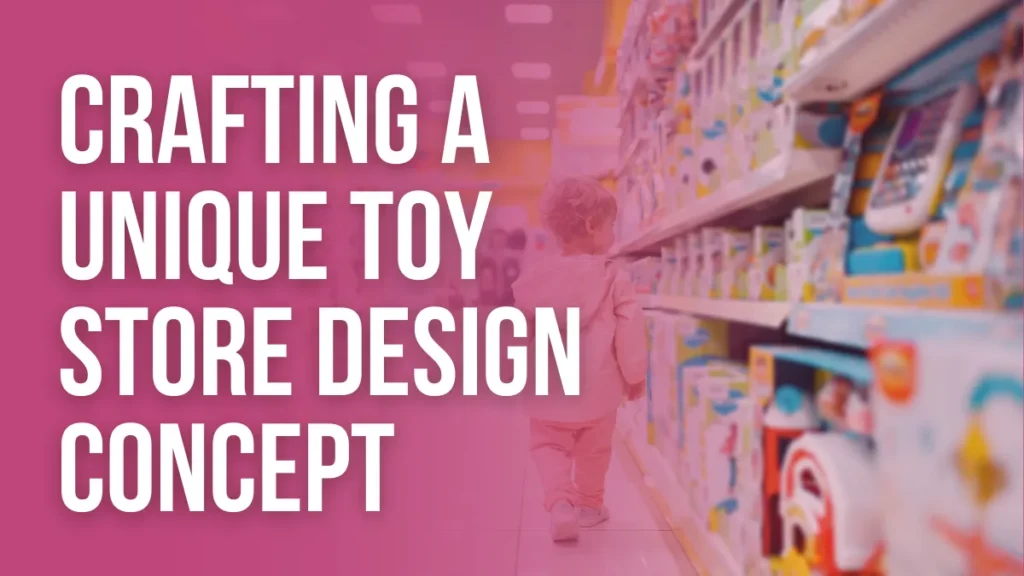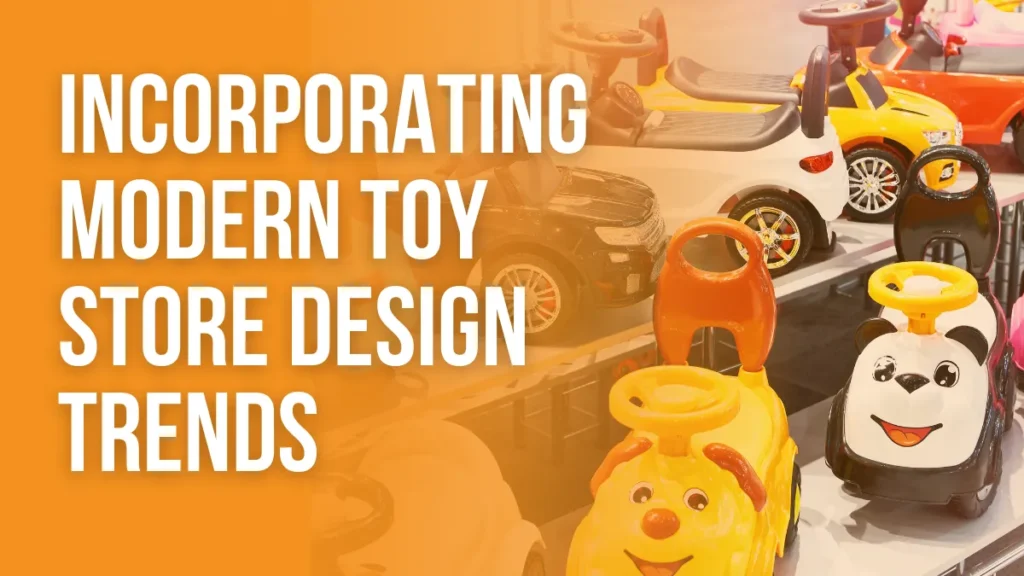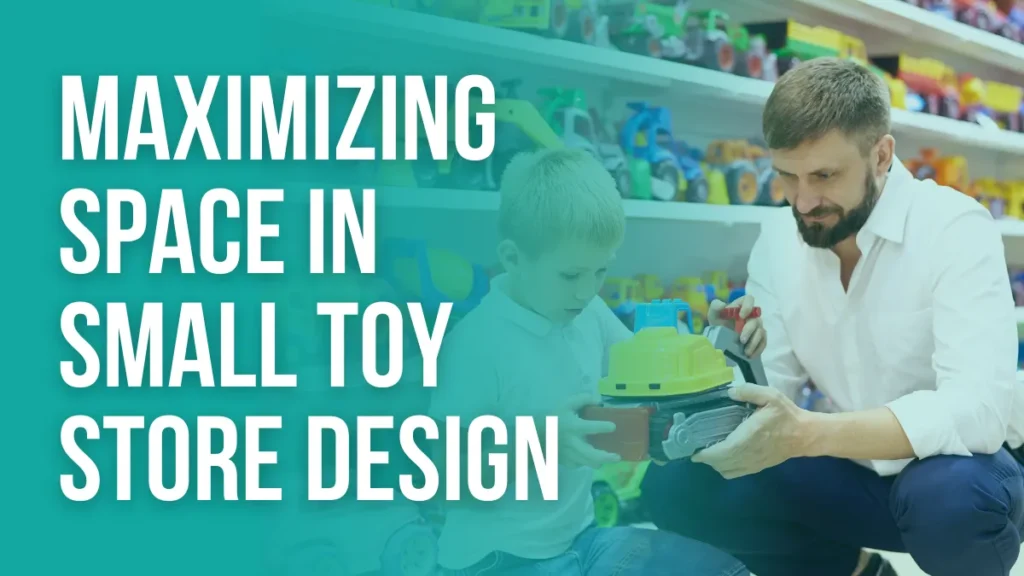Toy store design ideas are essential for creating a space that captivates children and parents, ensuring your store becomes a destination. In today’s competitive market, designing a toy store that entices customers to stay longer and explore more is key to boosting dwell time and increasing sales.
From playful layouts to interactive displays, the right design can transform your toy store into an engaging environment that delights and inspires. In this guide, we’ll explore ten innovative ideas that will help you craft a store experience that keeps customers coming back, making your space not just a place to shop but a place to play and discover.
Toy Store Design Ideas: Importance of Flow
Efficient flow in toy store design is crucial for enhancing customer experience and boosting sales. A well-planned layout guides shoppers smoothly through different sections, encouraging exploration and discovery.
Strategic placement of popular items, wide aisles, and clear pathways prevent congestion and frustration. Thoughtful flow design also facilitates easy restocking and maintenance, ensuring a pleasant shopping environment for customers and staff alike.
Crafting a Unique Toy Store Design Concept

Creating a unique toy store design concept is essential for standing out in the busy retail landscape. By incorporating imaginative and engaging elements, your store can become a destination that attracts customers and keeps them returning. Here are four key ideas to help you craft a distinctive and memorable design concept.
1. Theme-Based Layouts
One of the most effective ways to create a unique toy store design concept is by using theme-based layouts. Themes can transport customers to different worlds, making shopping a happening rather than a mere transaction. The possibilities are endless, whether it’s a fairy tale kingdom, an underwater adventure, or a space exploration theme.
How to implement:
Zoned Sections:
Decorative Elements:
2. Interactive Elements
Interactive elements are crucial in modern toy store design. They make the shopping experience more enjoyable and allow customers to interact with the products hands-on. You can create a setting that encourages play and discovery by incorporating interactive displays.
Ideas for interactive elements:
Play Stations:
Interactive Screens:
3. Incorporate a Focal Point
A visually striking focal point can draw customers into your store and set the tone for their shopping journey. This could be an oversized sculpture, an intricate display, or a large interactive installation that embodies the spirit of your store.
Examples of focal points:
Giant Toy Sculpture:
Central Display Table:
4. Custom Murals or Artwork
Adding custom murals or artwork can significantly enhance the uniqueness of your toy store. These artistic elements can be tailored to reflect your store’s theme and create a visually captivating environment.
How to use murals and artwork:
Storytelling Walls:
Interactive Art:
Incorporating Modern Toy Store Design Trends

Staying ahead in the retail industry means embracing modern design trends that resonate with today’s customers. In the world of toy stores, this involves creating a visually appealing but also functional, sustainable, and tech-savvy environment. By incorporating the latest trends, you can transform your toy store into a dynamic, engaging space that appeals to children and their parents.
5. Minimalist Layouts
Minimalist design has become popular across various retail sectors, including toy stores. A minimalist layout focuses on simplicity, clean lines, and open spaces, allowing the products to shine without overwhelming the customer. This approach can make your store feel more spacious, organized, and inviting, encouraging customers to explore leisurely.
How to implement a minimalist layout:
Open Spaces:
Selective Displays:
Neutral Color Palette:
6. Tech-Integrated Displays
Incorporating technology into your store’s design is a powerful way to engage today’s digitally savvy customers. Tech-integrated displays can provide interactive and informative experiences that make shopping more enjoyable and memorable. Using technology to enhance the in-store experience, you can create a modern toy store that stands out.
Ideas for tech-integrated displays:
Digital Screens:
Augmented Reality (AR):
Smart Shelving:
7. Sustainable Materials
As environmental awareness continues to grow, many consumers are seeking out businesses that prioritize sustainability. By incorporating eco-friendly materials and practices into your store’s design, you can appeal to these conscientious customers and show your commitment to the environment.
Ways to incorporate sustainable materials:
Recycled and Reclaimed Materials:
Energy-Efficient Lighting:
Eco-Friendly Packaging:
Maximizing Space in Small Toy Store Design

8. Vertical Displays
When floor space is limited, one of the most effective ways to maximize your potential is by utilizing vertical displays. By thinking upward rather than outward, you can create additional space for product showcases while keeping the store layout open and accessible.
How to implement vertical displays:
Tall Shelving Units:
Wall-Mounted Displays:
Hanging Displays:
9. Multi-Functional Furniture
Every piece of furniture in a small toy store should serve more than one purpose. Multi-functional furniture is a game-changer for maximizing space, as it allows you to combine storage, display, and seating in creative ways.
Examples of multi-functional furniture:
Display Tables with Storage:
Convertible Play Areas:
Seating with Storage:
10. Compact Play Areas
Play areas are essential in a toy store, providing children a space to engage and interact with products. However, these areas must be carefully planned in a small store to ensure they don’t overwhelm the available space. Compact, well-designed play areas can add value without taking up too much room.
Ideas for compact play areas:
Niche Play Zones:
Rotating Play Stations:
Integrated Play Features:
Conclusion
Designing a toy store that captivates, engages, and delights customers is a journey of creativity and innovation. By implementing these design ideas—from crafting a unique store concept to embracing modern trends—you can create an unforgettable shopping experience that keeps families coming back for more. Every detail, from vertical displays to interactive play zones, is crucial in transforming your store into a magical place where imagination runs wild and smiles are abundant.
Ready to turn your toy store into a wonderland of fun and discovery? Let’s make it happen together! Contact us at Parent Marketing or call us at (706) 899-3707 to start designing the toy store of your dreams today!






